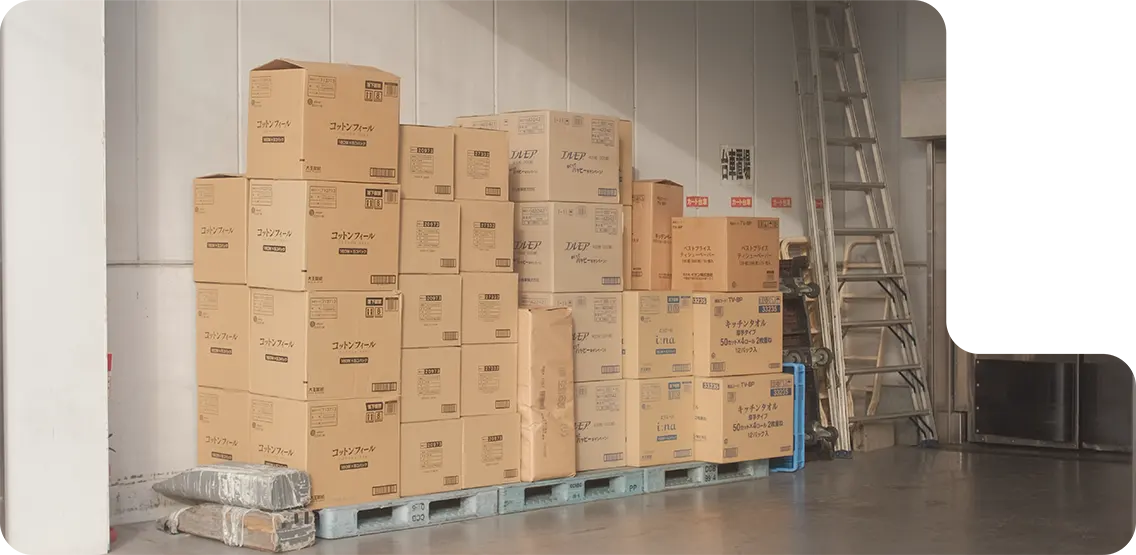Table of Contents
More Inventory Content
Get the latest e-commerce industry news, best practices, and product updates!
Table of Contents
More Inventory Content
Share This
Get the latest e-commerce industry news, best practices, and product updates!
Table of Contents
Share This
More Inventory Content
Get the latest e-commerce industry news, best practices, and product updates!
An inventory scanning system consists of hardware and software-based solutions that automate inventory tracking. A scanner system can track almost any quantitative good, such as food, clothing, books, equipment, and other items purchased by consumers, retailers, or wholesalers.
The current inventory management system almost entirely relies on barcode technology. Although barcodes were designed to automate grocery store checkout, their ability to encode many alphabetic and numeric symbols makes them excellent for encoding items for inventory tracking. These systems use wireless technology to broadcast information to a central computer system in real-time as transactions occur.

Inventory scans are classified into two types:
Hardware scan
Scans managed devices for hardware data. Hardware scans are completed fast. The hardware scan interval can be configured in an agent configuration (Tools > Configuration > Agent Configuration) that you can distribute to connected devices. Hardware scans happen by default every time the device boots.
Software scan
Examines software on managed devices. These scans take longer than hardware scans to complete. Software scans take a few minutes to complete depending on the number of files on the controlled device. The software scanner runs once daily by default, no matter the frequency of inventory scans on the device. To set the software scan interval, go to Configure > Services > Inventory tab.

What Industries Use Inventory Scanner Systems?
Inventory scanning systems have wide applications but mainly revolve around tracking commodities delivered to customers. Inventory tracking is critical in retail establishments, particularly those with a significant quantity or variety of merchandise items for sale.
It is also used in warehouses to track orders and shipments and automate order processing. Inventory scanning systems are also used extensively in manufacturing, shipping, and receiving.

How to Use an Inventory Scanner System for Tracking Orders
Inventory scanners function by scanning the barcode present on a product. The information stored in the barcode is read by the inventory scanning system and tracked by a central computer system, similar to a shipping barcode. Inventory scanners are portable, making it simple to scan a product no matter where it is stored.

How Do Inventory Scanners Work?
An inventory scanner system operates by scanning an item’s barcode. A machine is used to read the information encoded by the barcode. A central computer system then tracks this information. A purchase order, for example, may include a list of items to be pulled for packaging and delivery. In this situation, the inventory scanning system can perform a number of functions. It can assist a worker in :
- locating the items on the order list in the warehouse,
- encoding shipment information, such as tracking numbers and delivery addresses, and
- removing sold items from the inventory records to keep an accurate count of products in stock.
All this information helps provide a retail industry or warehouse with real-time inventory tracking data. An inventory scanning system is essential to every organization that moves a supply of goods. It simplifies discovering and evaluating inventory information in real-time with a simple database search.

What are Barcodes?
A barcode is a type of inventory scanner, a series of vertical lines detected by a particular scanner that reads the information directly from them. The data is subsequently sent to a database, which can be registered and tracked. Barcodes are used in retail businesses to facilitate purchases, in warehouses to track inventory, and on invoices to aid in accounting, among other applications.
Barcodes are simple to make as they can be created using Microsoft Excel, Word, or any computer application that supports font changes or online barcode generators. Specialized inventory management software also carries this feature.
Barcodes can hold much information for an inventory scanning system to utilize. For example, a barcode can carry important product information, such as the name of the product, its weight, dimensions, and where it is located in the warehouse. However, for effective selection, one would typically not use the barcode to record such specific information but rather a unique string of digits to ensure the correct item is picked.

What Is the Difference Between SKU and UPC?
Stock keeping unit (SKU) and universal product code (UPC) are two terms commonly used in the retail industry. While both are kinds of barcodes, they serve different purposes.
A universal product code (UPC) is a type of code printed on retail product packaging to help identify a specific item. It comprises two parts: the machine-readable barcode, a series of unique black bars, and a unique 12-digit number beneath it.
When scanning an item at checkout, UPCs quickly detect product details such as the brand name, item, color, and size. Their original purpose was – to speed up supermarket checkouts. UPCs are also useful for inventory tracking within a warehouse or store.
On the other hand, a stock-keeping unit or SKU is a scannable bar code commonly found on product labels in retail stores. The label enables sellers to automatically track inventory movement. The SKU is an alphanumeric combination of about eight characters. The characters are a code tracking the pricing, product information, and manufacturer details.
Businesses generate SKUs based on their products and services. A clothing store, for example, develops internal SKUs that display product data such as color, size, style, price, manufacturer, and brand.

How to Create Barcodes Using Excel?
To begin, one needs to obtain a barcode typeface. You can get a copy of the typeface from Dafont, Free Barcode Font, ID Automation, or Square Gear, among other places. To get the font to operate in sync with your Excel version, follow Microsoft’s instructions on installing a font for the office.
Creating barcodes in Excel once you’ve installed the font is simple.
Simply follow the instructions outlined below to get started:
Step 1
Make two columns in a blank spreadsheet in excel. Name the columns as ‘Text’ and ‘Barcode’. Type the alphanumeric data in the Text column, and the barcode will be visible in the Barcode column.
Step 2
In the Text column, format the cells. Right-click on the Text column to choose it. Format Cells, Numbers, and Text are the options. Larger numbers will not display in scientific notation, and leading zeros will be preserved.
Step 3
In the first blank row of the Barcode column, type the formula: =”*”&A2&”*. Let us assume that the cell in the Text column is A2; if it isn’t, alter the formula accordingly. If the first column contains no content, the second column will display two asterisks.
Step 4
Fill in the Barcode column at the bottom.
Step 5
In the Barcode column, change the typeface. Select the downloaded and installed barcode font from the font menu. Keep the header row’s font consistent with the rest of the spreadsheet.
Step 6
In the Text column, type alphanumeric data. The Code 39 font can encode the numbers 1 through 9, the letters A through Z (uppercase and lowercase letters are treated the same), the en dash (-), dollar sign ($), percent sign (%), period (.), slash (/), plus (+), and a space. The asterisk (*), which is used to indicate the start and end of a sequence, is also encoded by the font. The Barcode row will be filled with barcodes automatically.

Benefits of an Inventory Scanner System
Several advantages of an inventory scanning system make it a worthwhile investment for your business:
Improved accuracy
Inventory scanners reduce the need to manually check inventory, which might be a lifesaver in the retail industry or a warehouse with high stock levels. Furthermore, if a retailer owns a tiny e-commerce shop and cannot afford to pay someone to maintain inventory, the inventory scanner functions as a cost-effective digital assistant.
Improved speed
Retailers already have a lot on their plate as online merchants. Controlling inventory might not be a priority due to its time-consuming nature. A barcode inventory system streamlines the entire process by removing human data entry and the time spent manually counting things. For example, barcodes can instantly determine the cost of goods in stores, saving clerks’ time typing in prices and customers’ time waiting.
Improved visibility
Using scanners accomplishes more than just keeping a count of available inventory. They could also be used to track when products are getting dispatched and delivered to their final destination. This ensures total transparency, which allows users to share information with customers.
Improved inventory control
When a retailer is running a booming e-commerce business, they are bound to have overages and shortages. Overages waste storage space and cost money, whereas shortages annoy customers and cost money.
With the help of an inventory scanner system, they can quickly track inventory and see how much is in stock using inventory scanning technology, so you can decide whether to expedite a reorder or put one on hold.
Improved decision-making
A scanner system for inventory delivers quick and precise data, allowing a retailer to make better-informed judgments. If a retailer or a merchant sells many things, for example, they can simply tell which ones are selling and which are not. From there, they may decide to drop a line and cut their losses or advertise it more aggressively to boost sales.
Sign up today and leave the logistics to us
Sign up and we will get back to you within 24 hours to discuss what services would be best for your business needs. Or speak with us now and tell us what you need.
FAQs
Inventory scanners gather information about hardware and software and insert it into the central database. An inventory scanner is an element of the essential Endpoint Manager agent deployed on the device when configuring it with the Agent setup tool. When the gadget is first set up, the inventory scanner runs automatically. Once a device transmits an inventory scan to the core database, it is deemed managed.
A barcode scanner is a handheld device that reads the barcodes on a product and extracts data from them. It is made up of three primary components allowing it to perform correctly. The first component is a scanner that reads data from a barcode. A decoder, which can be internal or external, is another component. Finally, you need a cable to connect the scanner to a computer.
A barcode inventory system allows firms to track inventories more quickly and efficiently. A product containing a barcode is scanned with a handheld scanning device and immediately synced with inventory management software.
More inventory management software apps are available on the market, with bespoke solutions to suit each business’s needs. Stockpile by canvas, Veeqo, Ordoro, Delivrd, Sortly, Inventory Now, Cin7 Inventory and POS, Zoho Inventory, Inventory Control with barcode scanner, Fishbowl, Partender: Bar Inventory Software, to name a few.
